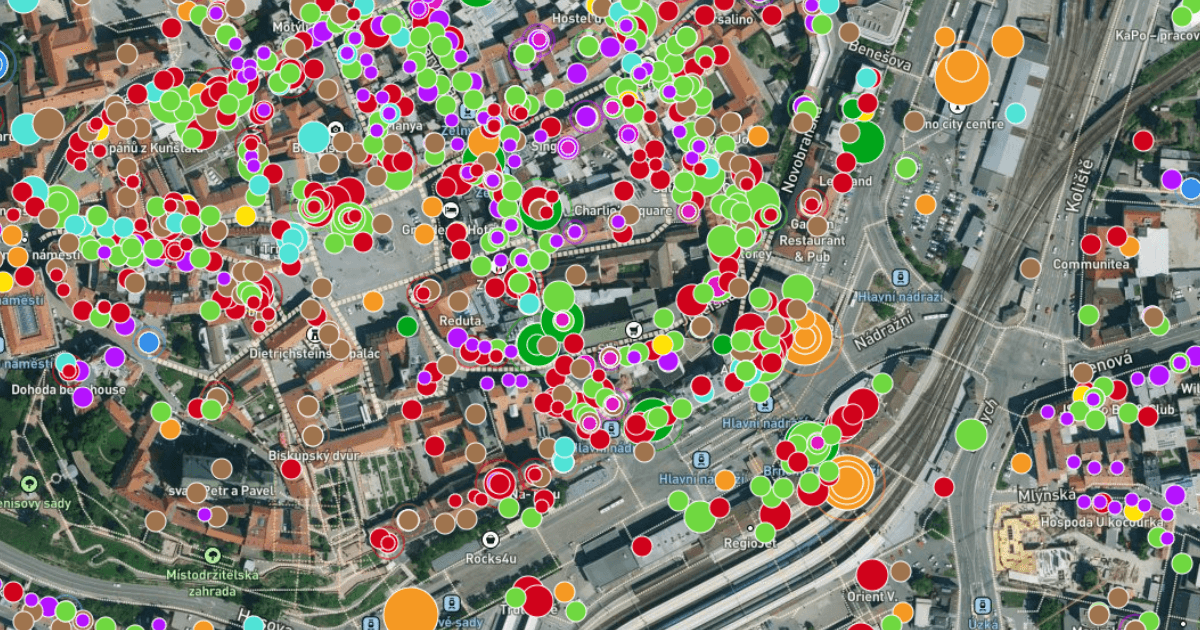
Barbora Hinnerova
SOLUTIONS
5 MINS READ
Smarter OOH Planning with Location Data
Plan smarter out-of-home campaigns with Location Intelligence. See how leading agencies use data to make outdoor advertising more effective.
Out-of-home (OOH) advertising has long been a staple of brand awareness — from towering billboards to transit ads seen on the daily commute. It reaches people in public spaces, delivering bold messages outside the home environment.
What sets OOH apart is its physical presence. These ads live in the real world — not on phones, laptops, or TVs. That makes them harder to ignore and ideal for reinforcing brand visibility in everyday settings.
The OOH space is dynamic, creative, and increasingly important as part of a broader media mix. But as marketing strategies grow more complex, relying solely on foot traffic or high-visibility spots is no longer enough.
Today, leading agencies are shifting to smarter, data-informed planning. With Location Intelligence, they don’t just guess where to place ads — they know where the right people live, move, and engage.
What Is Out-of-Home Advertising
Out-of-Home (OOH) advertising is a powerful medium that connects brands with consumers as they move through public spaces. This form of advertising encompasses a variety of formats, including billboards, street furniture like bus shelters and benches, transit ads, and other placements in high-traffic locations. OOH campaigns are designed to deliver high visibility and significant impact, making them a cost-effective way for brands to reach large audiences outside the home.
By placing ads in strategic locations where consumers commute, shop, or socialize, OOH works to keep brands top-of-mind during daily routines. The ability to target specific audiences and tailor messaging to particular locations means that OOH advertising can drive both brand awareness and online activity. Whether it’s a striking billboard on a busy highway or a creative poster in a bustling city center, OOH ads ensure that brands remain visible and relevant in the real world.
The Problem with Traditional OOH Planning
For years, OOH planning has relied on basic indicators: traffic volumes, billboard visibility, and proximity to landmarks or main roads. These factors still matter — but on their own, they no longer cut it.
They don’t tell you who is actually passing by.
They don’t show if those people match your target audience.
And they don’t reveal whether you’re wasting budget by overexposing already saturated areas.
This limited view can lead to missed opportunities, inefficient spending, and a lack of measurable results.
As advertisers face growing pressure to prove ROI and target more precisely, the OOH industry is undergoing a shift. Planners and agencies are looking for smarter, data-informed tools to guide their decisions.
At the same time, emerging trends — like integrated cross-channel strategies, dynamic creative, and advanced attribution — are raising expectations. Static panels and broad estimates aren’t enough anymore. Smarter planning starts with better data.
Smarter OOH Starts with Location Intelligence
Location Intelligence allows marketers to:
Map footfall patterns across dayparts and weekdays
Filter locations by demographic, socio-economic, or behavioral segments
Identify underserved zones where your target audience is present but underexposed
It brings precision to OOH in the same way programmatic has changed digital. Digital OOH utilizes real time based data and advanced technologies to deliver targeted ads to users. By using screens and device identifiers, digital OOH can reach the right user on the right device at the optimal moment. Digital campaigns in OOH can be tracked and optimized using real-time data, allowing for detailed measurement and improved campaign effectiveness.

Location data for the OOH campaign visualized in CleverMaps Studio.
How Digital Is Changing OOH
Digital Out of Home (DOOH) is transforming the landscape of outdoor advertising by introducing dynamic media and real-time targeting capabilities. Unlike traditional static billboards, DOOH utilizes digital billboards, interactive street furniture, and digital screens in public spaces to deliver engaging, adaptable content.
By using location data and the ubiquity of mobile devices, advertisers can now create highly targeted and impactful campaigns that respond to audience movement and behavior in real time.
For example, a retailer can use DOOH to promote a flash sale to consumers passing near their store, or a brand can update messaging on digital screens based on weather or time of day. This flexibility allows advertisers to create dynamic content that resonates with audiences and maximizes campaign effectiveness.
As technology continues to advance, DOOH is becoming an essential component of any OOH strategy, enabling brands to promote their message with precision and measure results with unprecedented accuracy.
How Leading Agencies Plan Smarter OOH Campaigns
OOH planning is shifting from media buying to strategic, data-driven decision-making — and top agencies are already working this way.
Using Location Intelligence tools like CleverMaps, planners can:
• Score panels based on audience density, behavior, and mobility patterns
• Simulate coverage and overlap to avoid wasting impressions
• Compare central vs. peripheral locations with real data, not assumptions
• Align OOH with digital channels, like search or display, for cohesive cross-media performance
• Integrate OOH exposure into attribution models to prove ROI
This approach replaces gut feeling with clear spatial insights — helping agencies plan smarter, spend better, and deliver measurable outcomes.
Real Use Case: Launching an FMCG Product in Urban/Suburban Zones
Let’s have a look at the use case of one of our clients: The objective was to maximize brand awareness for a new FMCG beverage while working with a limited outdoor advertising budget.
The challenge lay in planning a national OOH campaign that enabled smart media buying and avoided oversaturated zones where extra placements would add little value.
Here’s how we approached it:
Mapped current brand presence and competitor placements.
Overlaid mobility data to identify where the target audience moves during peak hours.
Highlighted suburban corridors with high potential but low exposure.
And the results?
25% fewer placements than original media plan
Higher awareness lift in targeted regions
Budget redirected to digital in zones with OOH overlap
The campaign's efficiency was measured by cost per thousand impressions, demonstrating greater cost-effectiveness compared to TV and digital video channels.
How to Measure ROI in OOH Campaigns
Proving the return on investment (ROI) of OOH campaigns is now more achievable than ever, thanks to advances in data and technology. Advertisers can use location data to track the real-time performance of their OOH ads, measuring key metrics such as impressions, store visits, and conversions.For example, a brand can analyze how many people viewed their OOH ad and subsequently visited their retail location, providing clear evidence of campaign effectiveness.
By continuously monitoring and optimizing campaigns using real-time data, advertisers can ensure their OOH strategy delivers measurable results. This data-driven approach not only demonstrates the value of OOH advertising but also helps brands refine their messaging and placement for even greater impact and revenue growth.
Ready to Plan OOH Like a Pro?
Book a demo with CleverMaps and see how Location Intelligence can turn your next OOH campaign from guesswork into a cost-efficient strategy.





